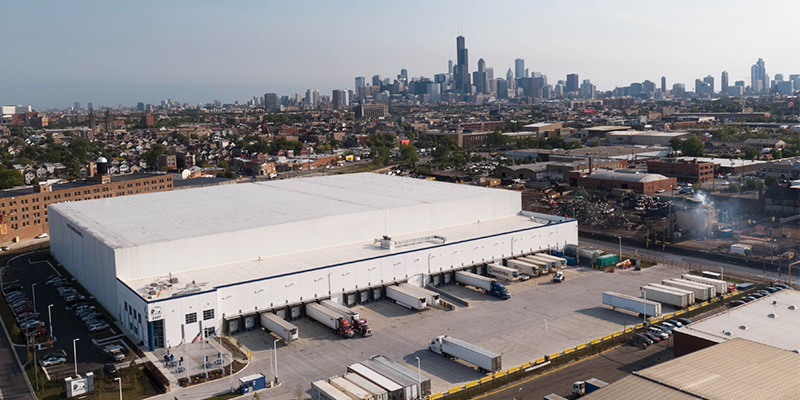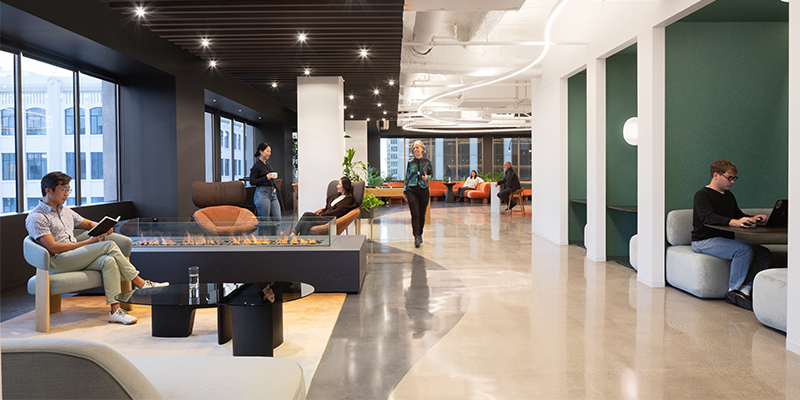As consumers expect shorter delivery windows of online products than ever before, the demand for urban infill properties close to major markets has surged. These last-mile locations in and near major cities typically lack available land for development, restricting new supply and generating opportunities for creative development.
A panel held this week at I.CON East: The Industrial Conference was moderated by Keith Lieberman, PE, senior vice president, operations manager, T&M Associates, and featured panelists Leslie Wohlman Himmel, co-managing partner, Himmel + Meringoff Properties;
Michael Bennett, vice president and head of development, DH Property Holdings LLC; Sean Dalfen, president and CEO, Dalfen Industrial; and Greg Lauze, managing partner, NorthBridge Partners LLC.
Lieberman said a recent survey of online buyers revealed that 30% expect same-day delivery, and 85% said that if a product couldn’t arrive quickly enough, they’d find a new retail source. Notably, 88% are willing to pay more for same-day delivery.
“It’s not just the consumer that’s a bigger driver for this space,” he said. “A Deloitte study said that 53% of total shipping cost getting a product from manufacturer to consumer is gobbled up in the last mile fulfillment, and it takes up about 41% of total logistics costs, including real estate assets and everything. It’s a critical piece of the supply chain.”
Constriction on land supply, cost of land and entitlement delays are among the biggest challenges for developers focused on infill development, but that hasn’t stopped emerging property types like multistory industrial from rising in demand.
“We’ve gone through multistory 1.0, and there’s much room to develop that product beyond where it is today,” said Bennett. “I’m eager to see what the next version of it will be.” When asked if his company is exploring developing multistory beyond the metropolitan New York City market, he said, “If the speedometer on the delivery truck is 15 miles per hour or less, we’re looking in your market, [including] Brooklyn, Bronx, Boston, Miami, and a bunch of cities on the West Coast.”
Dalfen noted that every market has a nuanced approach. His namesake company uses its own “last mile score” to rank different locations within a market, then its teams assess the available assets that meet their criteria.
“The evolution of multistory is how we work with tenants to create better efficiencies for delivering packages. It’s really about the product and how much moves through the facility,” Lauze added.
Every infill development is different, and there are no prescriptive size or requirements. “Everyone imagines they’ll build a million square feet, but the reality of some of these infill footprints is 20,000-80,000 square feet,” said Bennett. Dalfen noted that there’s a misnomer that last mile must be small; the reality is that there aren’t many sites of that size. “There is ‘too small’ for some markets – a 10,000-square-foot space isn’t really last mile, it’s more of an incubator space,” he said.
“Getting our customers to get product to their consumer in the most cost-effective way is our goal,” said Dalfen, noting that it could be better to have ten 100,000-square-foot spaces all around the market in lieu of one larger facility.
If the economy experiences a downturn, how will last mile be impacted? Dalfen said very little, as the demand drivers are stronger now than ever before. “There could be rent flattening or decline, but it’s all about one’s ability to have staying power.” Himmel noted that the biggest challenges in an economic downturn could be for buyers who bought up properties without the intention of a long-term hold. “It’s going to be hard for a few years, but I see residential and industrial remaining strong,” she said.
This post is brought to you by JLL, the social media and conference blog sponsor of NAIOP’s I.CON East 2022. Learn more about JLL at www.us.jll.com or www.jll.ca.









